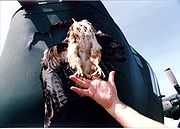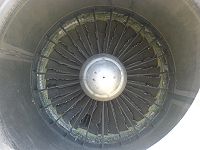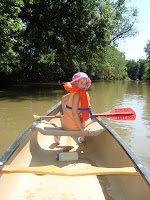 I recently got to go on an exciting, exotic trip to Venice! You know, the land of canals and gondolas...? The Citation X has a range of 3070 nautical miles, so it has the capability to travel almost anywhere in the world. Ok, maybe not non stop on this trip (it's 3,874 nautical miles from my home city of Cleveland to Venice) but pretty close. See how far it is between any two cities in the world.
I recently got to go on an exciting, exotic trip to Venice! You know, the land of canals and gondolas...? The Citation X has a range of 3070 nautical miles, so it has the capability to travel almost anywhere in the world. Ok, maybe not non stop on this trip (it's 3,874 nautical miles from my home city of Cleveland to Venice) but pretty close. See how far it is between any two cities in the world.This is why I wanted to get into this airplane so badly - I miss flying overseas from my military days. Although I lived in Germany, I got to travel all over
 Europe and Southeast Asia. I also spent quite a bit of time in Central and South America. I love to travel, which is part of the reason I chose to stay a pilot after the original incentive had become irrelevant (some one told me it was the toughest job to get in the army... ha, a challenge!). We spend a lot of time going coast to coast (and at .92 mach or 525 ktas (972 km/h), it doesn't take long). We go into Canada quite a bit.
Europe and Southeast Asia. I also spent quite a bit of time in Central and South America. I love to travel, which is part of the reason I chose to stay a pilot after the original incentive had become irrelevant (some one told me it was the toughest job to get in the army... ha, a challenge!). We spend a lot of time going coast to coast (and at .92 mach or 525 ktas (972 km/h), it doesn't take long). We go into Canada quite a bit.All right, any one who has been to Vegas knows this is actually the Venetian Hotel and Casino - I didn't actually go to Venice, Italy. The other pilot and I had quite a
 bit of time on the ground there so we walked around the "strip" as they call it. I'm not a gambler, so my interest was more in all of the amazing themed casinos. I'm sure you've heard of many of them, like the Stratosphere, which has rides on top (not for me), the Sahara, Circus Circus, Riviera, Stardust, Treasure Island, The Mirage, Flamingo, Caesars Palace, Bellagio, where we caught the big water show, and the MGM Grand Hotel and Casino, and many more.
bit of time on the ground there so we walked around the "strip" as they call it. I'm not a gambler, so my interest was more in all of the amazing themed casinos. I'm sure you've heard of many of them, like the Stratosphere, which has rides on top (not for me), the Sahara, Circus Circus, Riviera, Stardust, Treasure Island, The Mirage, Flamingo, Caesars Palace, Bellagio, where we caught the big water show, and the MGM Grand Hotel and Casino, and many more.Wikipedia: The Venetian Resort Hotel Casino is the largest AAA Five-Diamond rated Resort in the Americas. [1] This Venice-themed luxury hotel and casino is located on the Las Vegas Strip in Paradise, Nevada, on the site of the old Sands Hotel. The Venetian has 4,049 suites and a 120,000 square foot (11 000 m²) casino. Combined with the adjacent Sands Expo Convention
 Center and The Palazzo Hotel and Casino Resort, The Venetian is a part of the largest hotel and resort complex in the world --- featuring 7,128 hotel rooms and suites.[1]
Center and The Palazzo Hotel and Casino Resort, The Venetian is a part of the largest hotel and resort complex in the world --- featuring 7,128 hotel rooms and suites.[1]I got to play tourist, taking pictures of one of the performers in the hotel. This italian statue was actually a man, who spends hours posing in the maze of stores in the casino. He switches poses every once in a while, but once posed, it's hard to tell this is a person! Except when I gave him a tip - he winked at me.
Yea, every once in a while we get lucky. We just spent the night in Milwaukee, which though not a tourist hotspot, has a very nice downtown.


























